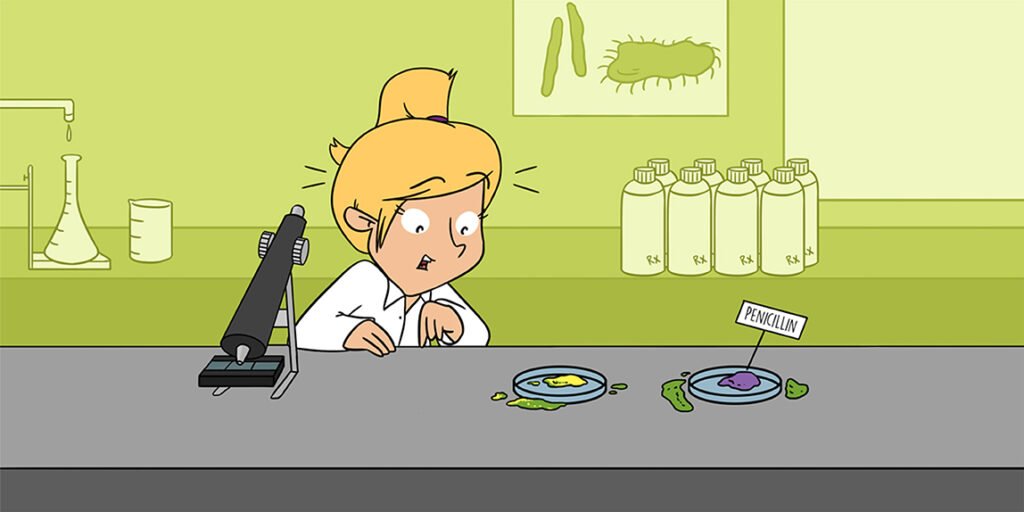Fighting harmful bacteria can be challenging, but antibiotics are like our heavy hitters. These antimicrobial substances can kill or prevent microorganisms from growing; there’s no denying their importance to our health. Different types of antibiotics are available, but all fall under either broad-spectrum antibiotics (most common) or narrow-spectrum antibiotics (which come in handy for specific purposes). Antibiotics commonly treat an infection that may spread to others around you and is difficult or impossible for your body to get rid of without outside intervention.
Antibiotic medicine is also recommendable if the length of infection to heal is too long or might exceed what your doctor recommends. Even the risk of severity of the condition may warrant its usage.
However, antibiotics only fight bacteria and not viruses that require the intervention of antiviral drugs to help combat your symptoms. Furthermore, antibiotics build up immunity to the disease you are trying to eliminate from your body. You can refer to COVID-19 cases, for example, where doctors administer drugs like Paxlovid or Remdesivir.
These come in different forms, such as pills, lotions, or tonics. Pills can be the commonly prescribed form of this type of medicine, but more severe cases may require intravenous (IV) injections by a trained medical professional to ensure faster absorption.
The story of the origin of antibiotics
- The past
As per MyBioSource’s account, a recent study discovered traces of tetracycline within the bones of mummified ancient Egyptians, dating back to approximately 2,000 years ago. Most scientists believe this would be impossible because it was not available until 1953. So how did it get there? It’s unknown how they were consuming the antibiotic, but some theories may sound relevant. One such idea is that microbes might have infected the bones at some point during the excavation or storage process or even later when they were re-analyzed.
The second theory to explain the use of antibiotics dating back to the Egyptian period can be more enjoyable. Some believe the prevalent Nubian diet could be the source of it at that time. According to George J. Armelagos (Anthropologist) and Mark Nelson (Medicinal Chemist), ancient beer may have contributed to this fermentation process since it contained several types of barley and the species Streptomyces bacteria. The only thing is that this particular strain was usually good for us.
Also, ancient Egyptians used to apply moldy bread to the infected site, a practice that was also common in Chinese, Serbian, and Greek civilizations. While they thought this process helped control infection, the realization may have dawned until much later that the penicillin from these foods has been the primary agent that reduced infections in wounds.
- The middle part
Before the discovery of antibiotics, humans didn’t have any defense against fatal bacterial infections, such as pneumonia, TB, rheumatic fever, and gonorrhea. The number one treatment for both children and adults was often superstition-led rather than science or medical fact. Due to this, even benign conditions like an infected ear or strep throat could get out of control or turn fatal. While this was there, one can imagine what may have happened with cases involving bacterial meningitis, which was one of the leading reasons for death in kids. If someone survived, they suffered a setback in the form of partial paralysis or hearing loss.
It was only in 1665 when an English scientist called Robert Hooke studied bacteria. After him, Belgian merchant Antoni van Leeuwenhoek, memorably known as one of the founders of microbiology, observed his plaque and saliva. He realized that they contained living, moving organisms, which he called ‘animalcules’ at first. Later, the renowned microbiologist Louis Pasteur delved deeper into this area and introduced the concepts of pasteurization and vaccination to the world.
- The modern times
The antibiotic era began with scientists like Ehrlich and Fleming. If Ehrlich gave the world the first modern form of antibiotic, ‘arsphenamine,’ to treat syphilis, Alexander Fleming had a chance to discover penicillin, which he talked about in one of his works but didn’t study its properties. Even though penicillin became a mainstream medicine for bacterial infections, it took some time for the word ‘antibiotic’ to gain recognition. The credit for making purified penicillin (the wonder drug) goes to Ernst Chain and Howard Florey in 1939.
Many Americans use prescription antibiotics today for different issues, such as Penicillin/Amoxicillin for chest/ skin/ urinary tract infections, Tetracycline/Doxycycline for acne, and rosacea, Chloromycetin for conjunctivitis and ear infections, Cefalexin for septicemia and meningitis, etc. The experts look at the time from 1940 to 1962 as the golden standard in the history of antibiotics. Nevertheless, one cannot deny that it has been one of the most valuable findings in the medical world that continues to save millions of lives.
The National Heart, Lung, and Blood Institute informs that over 100k Americans have sickle cell disease (SCD) and are at risk of developing acute chest syndrome (ACS). The victims of SCD often face hospitalization due to ACS, which happens to be the second leading factor in this area and the most common reason for death. One of the studies suggests that it causes nearly 1.1% of deaths in kids and 4.3% in adults. Hence, treating this condition becomes a priority for health care providers, who may prescribe antibiotic medicine for recovery.
